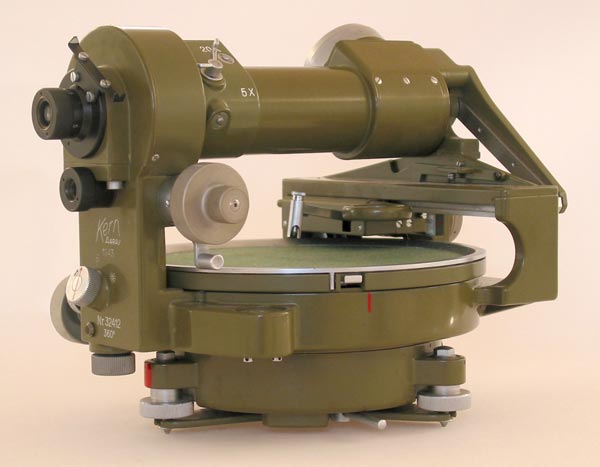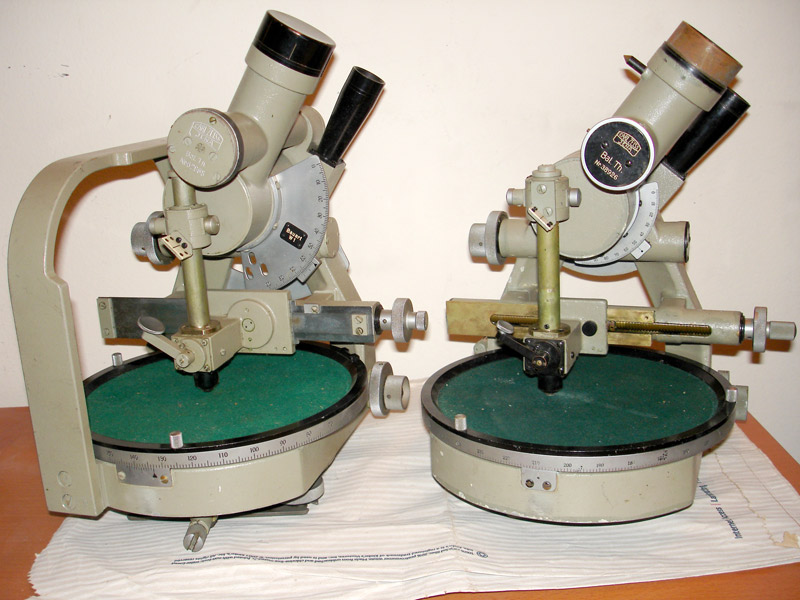Carl Zeiss Jena Recording Balloon Theodolite Bal Th.
Mechanical Recording Theodolites date back to 1910. They are not common in the west (former NATO countries.) In the united states Buff & Buff made a recoding theodolite, Kern of Switzerland and Rosenhagen of the former FRG (West Germany). At least two manufacturers made them in the Former DDR (East Germany), Carl Zeiss Jana and Askania. The Askania model prints readings on a paper tape, and the theodolite covered here generates a plot on paper polar charts.
 |
Pictured left is recording Kern Ballontheodolit on display in the Aarau Museum Switzerland c.1944. It is unknown if this theodolite was put into production or simply a proof of concept prototype. It is similar to the Zeiss in respect to producing a polar plot of the path of the balloon rather than a readout of the position of the theodolite like the other recording theodolite models do. |
A Jena Catalog Page describes the zeiss instrument below as follows: "This instrument is operated by a single observer and produces a synchronous and sequential semi-automatic plotting of the horizontal projection of the line of a balloon's flight without reading the horizontal and vertical directions."
Simply stated it is a balloon theodolite that mechanically converts movements in azimuth and elevation along with and assumed ascent rate to points on to a polar coordinate system chart. A theodolite and plotting board in one unit. Note that the finder scope has a separate eyepiece. This seems to be common in German designs. This instrument is illustrated in "Handbuch Der Meteorologischen Instrumente" published in 1935. It is believed to have been in production for a number of years. Later production examples show some design improvements. Below is a comparison photo of Serial Numbers 62988 (left) and 38926. 62988 the later production unit has a handle which improves the structural integrity of the theodolite as well as improving the ability to transport it. It has a larger vertical scale, covered drive gear assembly and 10 part verniers, on the both the azimuth and elevation scales. The gun sites are also located on the same side as the eyepiece on the later production unit (hence it cannot be seen in the photo).

|
|||||
